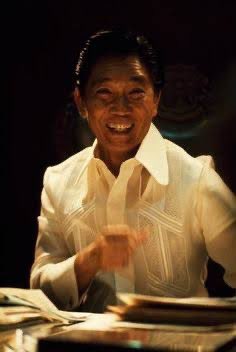
Ahead of #BonifacioDay a thread of readings and some other things like maps and music. First, Monumento: why is it, where it is, why does it have that design, what does it represent in our national imagination? officialgazette.gov.ph/bonifacio-150/
3. Our Proclamation of Independence said certain elements of the flag paid homage to the Katipunan: find out what they are. malacanang.gov.ph/3846-origin-of… #BonifacioDay
4. In fact the iconography of the Katipunan represented a break with that of the colonial era, see how its flags evolved, too: malacanang.gov.ph/3926-flags-and… #BonifacioDay
5. I've described Bonifacio as the person why might have been your cubicle seatmate if you work in a BPO: quezon.ph/2017/11/30/bon… #BonifacioDay
6. But together with Bonifacio's glory is the tragedy of his fall. For that reason, he occupies an uneasy place in our national story. quezon.ph/2017/08/31/spo… #BonifacioDay
7. It's well to reflect on the state of flux our society was in, in his time, reflected right on down to what we chose to consider parts of our country back then. quezon.ph/2017/06/12/spo… #BonifacioDay
8. You don't have to be a historian or a lawyer to be fascinated by, and moved, by the transcripts of Bonifacio's trial. malacanang.gov.ph/3330-transcrip… #BonifacioDay
9. Here's a #BonifacioDay reflection from some years back, combining our distant and recent pasts. quezon.ph/2016/11/30/the…
10. Better than any document, music can connect us to the past. Consider this march, sung by Katipuneros in the field.
https://twitter.com/mlq3/status/1167272423588151296#BonifacioDay
11. Or consider our first national anthem, commissioned by Bonifacio.
https://twitter.com/mlq3/status/1167274029729759234#BonifacioDay
12. Or consider the value of a simple, remembered list: of Katipuneros present at the start of our revolution, and what their occupations tells us about the movement.
https://twitter.com/mlq3/status/1164715759991287809#BonifacioDay
13. Or consider how we see Bonifacio in postcards and paintings, and how this might clash with his sole surviving photo. An essay on his portrayal down the years.
https://twitter.com/mlq3/status/1068327227350077440#BonifacioDay
14. Finally, consider the programs of yesterday, and how they might compare to the programs of today:
https://twitter.com/mlq3/status/1200575975462883328#BonifacioDay
15. And that includes how media might devote time to #BonifacioDay
https://twitter.com/mlq3/status/1200576282657869824
16. Then (as this photo taken 80 years ago tomorrow shows) as now, we come together as a nation for solemn days like #BonifacioDay. How we do so, though, can change. How is it different now from before?
https://twitter.com/mlq3/status/1068316835693527040
17. We are part of an ongoing national conversation on #BonifacioDay since experts, we should remember, will always disagree and can't resolve everything.
https://twitter.com/mlq3/status/1200235997209874432
18. If you have some spare cash do buy Jim Richardson's fascinating book, "The Light of Liberty," but if you don't, you can read all his research online, free, here: kasaysayan-kkk.info No #BonifacioDay is complete without visiting his fantastic site.
• • •
Missing some Tweet in this thread? You can try to
force a refresh










